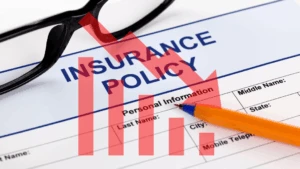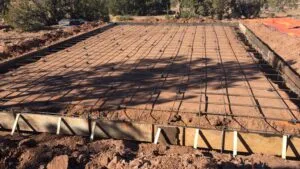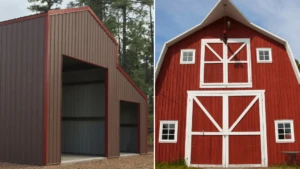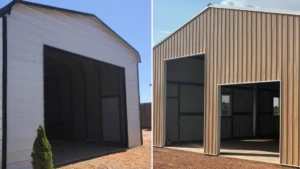When it comes to building a durable, cost-effective structure, cold-formed metal buildings are becoming a top choice for investors and homebuilders alike. But here’s a question we hear often: “Will a cold-formed metal building help me save on insurance?”
Let’s break it down so you can make an informed decision—and maybe save some serious cash along the way.
What Is a Cold-Formed Metal Building?
Before we get into premiums and policies, let’s cover the basics.
Understanding Cold-Formed Construction
Cold-formed metal buildings are made by bending steel sheets into structural components at room temperature—hence the name “cold-formed.” This process results in lightweight yet strong framing that’s perfect for a variety of applications, from residential garages to large commercial facilities.
As a licensed contractor and metal building dealer, we’ve worked with both cold-formed and red iron (hot rolled) systems. And I can tell you, cold-formed is often the go-to for clients looking for faster installation and lower upfront costs.
How Insurance Companies Look at Risk
Now let’s talk about what insurance companies really care about: risk.
When they assess your property, they’re asking: How likely is it that this structure will suffer damage? How expensive will it be to repair or replace?
Spoiler alert: Cold-formed buildings tend to do well on both fronts.
Why Cold-Formed Metal Buildings May Lower Your Premiums
Here are a few reasons insurers might offer you a better deal if you’re building with cold-formed steel.
1. Fire Resistance
Steel is naturally non-combustible. While traditional wood-framed structures can catch fire quickly and burn fast, cold-formed steel framing significantly reduces that risk. Many insurers offer discounts for fire-resistant construction. Also, if you are considering finishing the inside, take into account the materials used and how fire-resistant they are.
2. Wind and Seismic Durability
Cold-formed metal systems are engineered to meet or exceed wind and seismic codes. If you’re in a hurricane- or earthquake-prone area, this level of resilience can translate directly into lower insurance rates.
3. Pest Resistance
Unlike wood, steel doesn’t invite termites or rodents. Pest damage claims can be costly and frequent with wooden structures, and insurance companies know that. Steel structures help reduce this risk.
4. Reduced Claims History
In our experience working with many builders, the ones using cold-formed buildings often report fewer insurance claims over time. Or none at all. That’s something insurers track—and reward.
Key Features That Impact Insurance Rates
While cold-formed framing is a big part of the equation, insurers also consider the following:
- Roofing type (metal roofs are highly rated for hail and fire resistance)
- Location (fire zones, flood plains, seismic risk areas)
- Occupancy and usage (residential vs commercial, storage vs manufacturing)
- Security features (alarms, fire suppression systems, etc.)
Pro Tip: If you’re planning a cold-formed metal building, let your insurer know up front. Some policies have special considerations or discounts specifically for engineered steel structures.
Do These Metal Buildings Always Lower Premiums?
Not always. While there’s a strong correlation between cold-formed metal construction and lower risk, insurance pricing varies widely between companies and regions. Also, some insurers may not be familiar with the structural benefits unless you explain them.
Always get quotes from multiple providers, and ask specifically about discounts for non-combustible or engineered steel construction.
Additional Ways to Save on Insurance with Cold-Formed Buildings
Aside from the materials themselves, here are ways you can increase your savings:
- Install sprinkler systems: Especially in commercial or large-use buildings
- Use fire-rated insulation: Some types reduce insurance premiums further
- Secure your site: Adding alarms or cameras often nets a discount
- Bundle policies: Combine property and liability for multi-structure investments
Final Thoughts: Is Cold Formed Worth It for Insurance Savings?
If you’re building from the ground up and looking for a structure that’s durable, fast to erect, and potentially cheaper to insure, a cold-formed metal building is a strong contender.
From the field, we’ve seen these buildings not only hold up better in adverse conditions but also give our clients peace of mind—and a few extra dollars in their pocket from reduced premiums.
As always, talk to both your contractor and your insurance provider early in the planning process. Make sure everyone’s on the same page, and be ready to present the benefits of your cold-formed design to help negotiate better coverage terms.
Ready to Build?
At The Luna Crew, we specialize in cold-formed and red iron metal buildings with custom foundation solutions. Whether you’re a first-time homebuilder or a seasoned investor, we can help you choose the right system that fits your goals—and your budget. Contact us today if you are ready to get started or have any questions!
References
- “Cold-Formed Steel Design Guide,” Steel Framing Industry Association, www.steelframing.org.
- Insurance Institute for Business & Home Safety. “Resilience Ratings for Buildings,” www.ibhs.org.





